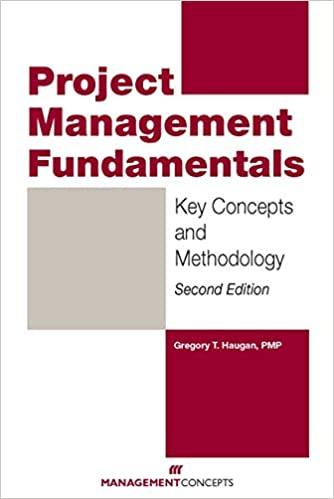Question
What do you think was done right on the System's Risk Management and Evaluation Methodology for the project below? Any suggestions for improvements? Overview of


What do you think was done right on the System's Risk Management and Evaluation Methodology for the project below? Any suggestions for improvements?
Overview of Proposed Project
Best Glide Ratio System is a system that will automatically compute the aircraft's glide ratio, distance that the aircraft can cover given the current glide ratio and provide the pilot with nearest airport location. BGRS will use Global Positioning Satellite (GPS) almanac data to determine if the aircraft is capable of reaching the nearest airport and automatically provide a track to that airport. BGRS consists of a small display or head unit that is mounted in the aircraft's glare shield. The display will provide the pilot with critical information such as the current glide ratio, time left until altitude is exhausted, remaining distance available, and track to the nearest airport if it is reachable. BGRS will reduce the pilot workload during an emergency condition and eliminate the need for the pilot to make calculations by hand or flight computer. BGRS will be certified and comply with the latest FAA regulations.
Risk Philosophy
The overall risk philosophy of the BGRS program is to either transfer, accept, or control the risk. That is, the program is not risk adverse due to the system being developed. Although it is intended to be used on General Aviation (GA) aircraft, it does not fall into Federal Aviation Administrations minimum equipment required for either visual or instrument flight rules. It is intended to supplement, not replace pilot decision making. Lastly, the system relies heavily on the Global Positioning Satellite (GPS) system which is used throughout the aviation industry today.
Risk Management Approach
The primary goal of risk management is to provide a disciplined process to identify and control risks throughout the system life cycle (INCOSE, 2015). Using a structured risk management approach enables the program to mitigate the effects of cost, schedule, and technical risks to the program (INCOSE, 2015). BGRS will follow the following process to manage risk:
- Document the risk in the programs risk register
- Categorize the risk in terms of cost, schedule, or technical performance
- Establish the level of risk in terms of probability of likelihood and consequence
- Develop a risk mitigation strategy
- Continually monitor and assess risks
Each month a risk meeting will be held to status BGRS risks. The meeting will be chaired by the Program Manager and Lead Systems Engineer. All integrated product leads will attend the meeting. The purpose of the meeting is to ensure that the level of risk is still current, and that the mitigation strategy is effective for all open risks. Additionally, it provides a forum for introduction of new BGRS risks.
Risk Management Demonstration
Table 1 provides the current risk register for BGRS with examples from each risk category. Since risk assessment is a continuous process, the table is still in work. It should be noted that ideally risks should be identified in the planning phase. Each risk is described using the If
Table 1
BGRS Risk Register


Step by Step Solution
There are 3 Steps involved in it
Step: 1

Get Instant Access to Expert-Tailored Solutions
See step-by-step solutions with expert insights and AI powered tools for academic success
Step: 2

Step: 3

Ace Your Homework with AI
Get the answers you need in no time with our AI-driven, step-by-step assistance
Get Started


